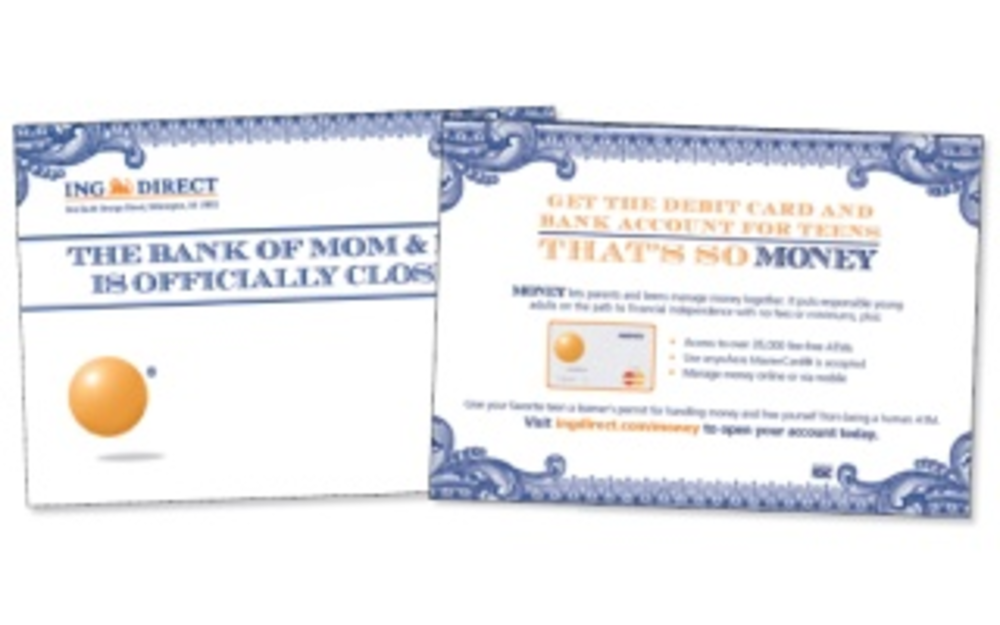Despite the need to connect with consumers across multiple channels, financial services institutions still don’t view social media as an effective direct marketing channel. Industry experts agree that the disastrous economic crisis has made it vital for financial services marketers to rally consumers with engaging and relevant communications across channels, and marketers in this space can no longer lazily send credit card offers and perks through direct mail to generate consumer interest. To be effective, marketers must manage their brands’ reputations and find consumers across digital channels. In spite of the multichannel sentiment, none of the marketers with whom Direct Marketing News spoke found it necessary to send direct response offers to consumers on social media outlets like Facebook and Twitter.
The financial services space, which saw a 4% increase in ad spending through the first nine months of 2011 to $6.7 billion, has become more about connecting with consumers emotionally than it was before the recession. For example: Capital One‘s 2006 “No Hassle Rewards” advertising campaign, which featured comedian David Spade as a competing customer service representative who repeats the word “no” to consumers asking about rewards perks, focused more on the negativity associated with financial services companies than on the benefits. Today’s Capital One campaign, which stars comedian Jimmy Fallon, touts the benefits of “more cash” and features a cute baby throwing cereal at him.
Capital One, which offers financial products and services to consumers, small businesses and commercial clients through roughly 1,000 branches, the Internet and other distribution channels, makes connections with consumers across channels, says Chris O’Neill, director of digital and PR campaigns at Capital One.
“We continue to use a fully integrated marketing approach to ensure the Capital One name is omnipresent,” he explains. Capital One uses broadcast, print, promotions/sponsorships, direct mail, online and community-engagement channels and tactics. “We’re fo-cusing on efforts that deliver an integrated experience for our customers, building our inbound brand in parallel with our outbound brand,” O’Neill adds.
The same can be said for Capital One’s customer service efforts, which O’Neill says occur in an integrated fashion through the telephone, the Web, in branch and on Twitter and Facebook. However, when asked which direct marketing channels Capital One uses most effectively, O’Neill doesn’t mention social media.
Like Capital One, ING Direct U.S. — a financial services institution that offers branchless banking by enabling consumers to transact on the Web, by telephone, ATM or by mail — doesn’t make direct offers on social media.
John Owens, head of marketing at ING Direct U.S., says ING currently uses social media to “have conversations with customers for advocacy and loyalty” and to answer questions, but not as a direct response channel. Owens says ING has “avoided trying to buy fans and followers [on social]. We’ve not done offers, but we’ve used the channel to connect with customers one-on-one.”
Integrated campaign yields
double-digit growth
double-digit growth
Last September, Huntington Bank launched a multimedia campaign online and across direct channels explaining the value of Asterisk Free Checking with impressive results.
ING’s most recent campaigns focus on the Electric Orange Checking Account and boast the slogan, “Get rid of checking fees.” The brand invests heavily in direct mail and email and is “testing” on mobile to “find ways to respect [consumer privacy] but also inform customers on the channel,” Owens says.
“People are more protective of their privacy with mobile today so it’s much harder to actively market to them there,” he adds.
Owens says ING deflects privacy concerns by being “very acutely aware” of consumer sentiment. “If something goes wrong for us it makes a mess of the brand. Every once in awhile, we get complaints that we’re too protective, but I’m OK with that.” ING’s marketing is opt-in only, Owens says. “That’s the way we’ve always worked. If people don’t want to hear from you, then that’s important.”
Huntington Bank, a Midwest-based financial institution, doesn’t use social media for what CMO David Clifton refers to as “proactive marketing.” (see sidebar: Integerated campaign yields double-digit growth).
“I don’t see a lot of play for it,” Clifton says, referring to direct response social marketing. “At this point, we like to have our ear to the rail and participate in dialogues there.”
For Huntington, social media enables the company to “stay close to [its] communities” by offering free tickets to events, such as Grand Rapids Gryphons, Cleveland Cavaliers and Bowling Green games. “We don’t even collect data for those promotions,” Clifton says. “It’s just a reward to our customers.”
Clifton isn’t opposed to using direct response on digital channels like banner ads and search. Other than social media, he says his bank has been just as effective using these channels as they have been with direct mail.
“My point of view is that when it comes to attracting customers, you need to cast a broad net,” he says. “With Internet and online, we cast a broad net to make sure we’re reaching prospects all the time.”
Even Ardmore Banking Advisors, a b-to-b provider of credit and risk management technology services, shies away from social media in generating leads. The Pennsylvania-based company uses a heavy mix of email marketing and telemarketing in collaboration with PointClear to drive sales.
“I don’t find social media to be effective except for possibly LinkedIn,” says Deb Cypher, VP and product manager at Ardmore Banking Advisors. “It hasn’t been terribly effective, though we did get a couple of leads, and we got our name out there.”








